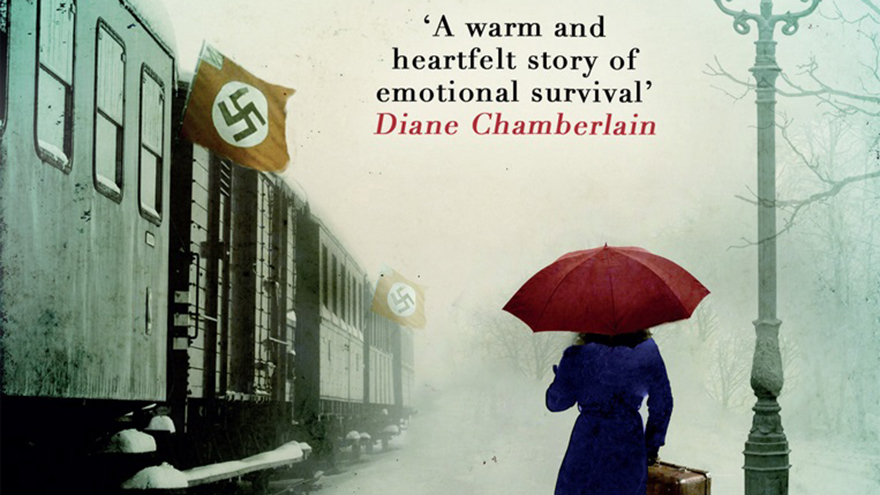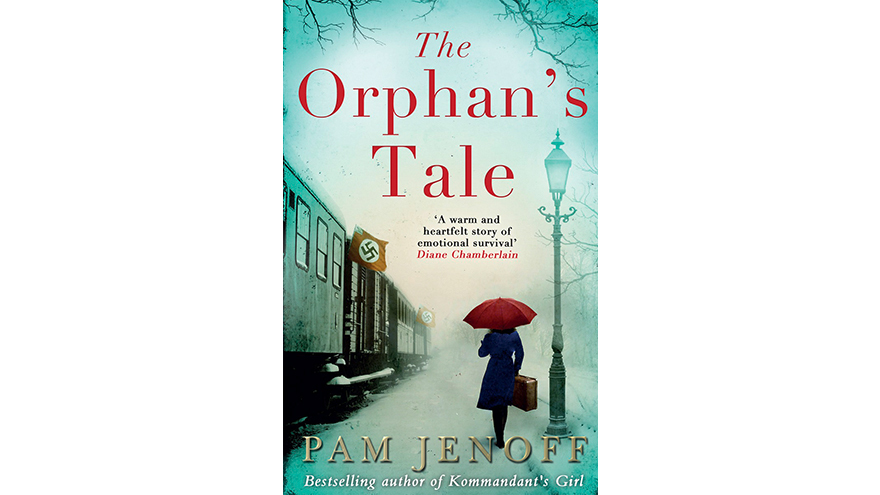Wartime Memories: Excerpt from The Orphan’s Tale by Pam Jenoff

The Orphan’s Tale by Pam Jenoff (HQ PB, £7.99)
Review and Extract
Reviewed by Karen Byrom
Nazi officers, circus performers and a little Jewish baby left to die on a train. The Orphan’s Tale delivers a thrilling, yet heart-breaking story of life and love, heroism and sacrifice in wartime Europe.
Pregnant by a German soldier, 17-year-old Noa has been cast out by her family in Nazi-occupied Holland and finds herself in Germany, alone without her baby. She has given him up to the Lebensborn programme – a Nazi initiative to continue the “perfect race” of blond-haired, blue eyed Aryans. But Noa’s baby was born dark, and she doesn’t know if he will be allowed to survive.
Noa find work cleaning at a railway station in a small town where Nazi trains pass through daily, taking their human cargo of misery to the camps out East. When she stumbles across a boxcar of Jewish babies left abandoned to die, she saves one little soul who has somehow clung on to life. In turn, Noa and the baby boy are saved by the folk of Herr Neuhoff’s circus.
Loyalty and friendship
But Noa must work to earn her keep. Herr Neuhoff instructs trapeze artist Astrid to train her in the high-flying act. After a strained start, the two women bond, and gradually unburden their secrets. For Astrid, a Jew, the circus means safety, just as it does for Noa. But uncertain times mean that no-one is truly safe. As the net closes in on both women, their loyalty is tested to the limit. Will either survive?
The Orphan’s Tale opens with an old woman visiting an exhibition of old circus paraphernalia in Paris. It soon becomes clear that she was part of the circus and part of Noa and Astrid’s story. And so we are introduced to the circus, as the narrator slips back in time to the 1940s and the dangers she lived through with her friend.
It’s a heart-warming story, made all the more poignant by the fact that author Pam Jenoff was inspired by real-life events. A boxcar of unknown babies was found abandoned by the Nazis. German circus owner Adolf Althoff sheltered Jews from the Nazis and was later named Righteous Among the Nations by the Jewish people.
He said, “We circus people see no difference between races and religions.”
Noa and Astrid’s story echoes these sentiments. Read on for the prologue of the Orphan’s Tale …
Prologue
Paris
They will be looking for me by now.
I pause on the granite steps of the museum, reaching for the railing to steady myself. Pain, sharper than ever, creaks through my left hip, not perfectly healed from last year’s break. Across the Avenue Winston Churchill, behind the glass dome of the Grand Palais, the March sky is rosy at dusk.
I peer around the edge of the arched entranceway of the Petit Palais. From the massive stone columns hangs a red banner two stories high: Deux Cents ans de Magie du Cirque – Two Hundred Years of Circus Magic. It is festooned with elephants, a tiger and a clown, their colors so much brighter in my memories.
I should have told someone I was going. But they would have only tried to stop me. My escape, months in the planning since I’d read about the upcoming exhibit in the Times, had been well-orchestrated: I had bribed an aide at the nursing home to take the photo I needed to mail to the passport office, paid for the plane ticket in cash.
I’d almost been caught when the taxi cab I’d called pulled up in front of the home in the pre-dawn darkness and honked loudly. But the guard at the desk remained asleep.
Sword swallowers, dancing horses and clowns
Summoning my strength now, I begin to climb again, taking each painful step one by one. Inside the lobby, the opening gala is already in full swing, clusters of men in tuxedos and women in evening gowns mingling beneath the elaborately painted dome ceiling. Conversations in French bubble around me like a long forgotten perfume I am desperate to inhale. Familiar words trickle back, first in a stream then a river, though I’ve scarcely heard them in half a century.
I do not stop at the reception desk to check in; they are not expecting me. Instead, dodging the butlered hors d’oeuvres and champagne, I make my way along the mosaic floors, past walls of murals to the circus exhibit, its entrance marked by a smaller version of the banner outside.
There are photos blown up and hung from the ceiling by wire too fine to see, images of a sword swallower and dancing horses and still more clowns. From the labels below each picture, the names come back to me like a song: Lorch, D’Augne, Neuhoff — great European circus dynasties felled by war and time. At the last of these names, my eyes begin to burn.
Beyond the photos hangs a tall, worn placard of a woman suspended from silk ropes by her arms, one leg extended behind her in a mid-air arabesque. Her youthful face and body are barely recognizable to me. In my mind, the song of the carousel begins to play tinny and faint like a music box. I feel the searing heat of the lights, so hot it could almost peel off my skin. A flying trapeze hangs above the exhibit, fixed as if in mid-flight. Even now, my almost ninety year-old legs ache with yearning to climb up there.
I slip beneath the roped stanchion
But there is no time for memories. Getting here took longer than I thought, like everything else these days, and there isn’t a minute to spare. Pushing down the lump in my throat, I press forward, past the costumes and headdresses, artifacts of a lost civilization.
Finally, I reach the rail car. Some of the side panels have been removed to reveal the close, tiny berths inside. I am struck by the compact size, less than half my shared room at the nursing home. It had seemed so much larger in my mind. Had we really lived in there for months on end?
I reach out my hand to touch the rotting wood. Though I had known the rail car was the same the minute I had seen it in the paper, some piece of my heart had been too afraid to believe it until now.
Voices grow louder behind me. I glance quickly over my shoulder. The reception is breaking up and the attendees drawing closer to the exhibit. In a few more minutes, it will be too late.
I look back once more, then crouch to slip beneath the roped stanchion. Hide, a voice seems to say, the long-buried instinct rising up in me once more. Instead, I run my hand under the bottom of the rail car. The compartment is there, exactly as I remembered.
The door still sticks, but if I press on it just so… It snaps open and I imagine the rush of excitement of a young girl looking for a scribbled invitation to a secret rendezvous.
But as I reach inside, my fingers close around cold, dark space. The compartment is empty and the dream I had that it might hold the answers evaporates like cool mist…
Buy The Orphan’s Tale from Amazon
More Like This:





